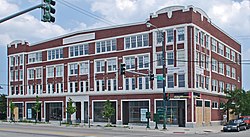
Illinois Institute of Technology (IIT), commonly referred to as Illinois Tech, is a private research university in Chicago, Illinois. Tracing its history to 1890, the present name was adopted upon the merger of the Armour Institute and Lewis Institute in 1940. The university has programs in architecture, business, communications, design, engineering, industrial technology, information technology, law, psychology, and science. It is classified among "R2: Doctoral Universities – High research activity". The university's faculty and alumni include 3 Nobel Prize laureates, 2 Fulbright Scholarship recipients, and 1 recipient of the National Medal of Technology.

Douglas, on the South Side of Chicago, Illinois, is one of Chicago's 77 community areas. The neighborhood is named for Stephen A. Douglas, Illinois politician and Abraham Lincoln's political foe, whose estate included a tract of land given to the federal government. This tract later was developed for use as the Civil War Union training and prison camp, Camp Douglas, located in what is now the eastern portion of the Douglas neighborhood. Douglas gave that part of his estate at Cottage Grove and 35th to the Old University of Chicago. The Chicago 2016 Olympic bid planned for the Olympic Village to be constructed on a 37-acre (15 ha) truck parking lot, south of McCormick Place, that is mostly in the Douglas community area and partly in the Near South Side.
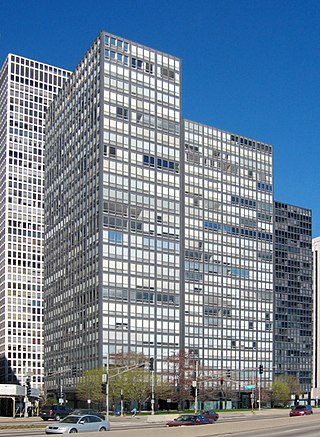
860–880 Lake Shore Drive is a twin pair of glass-and-steel apartment towers on N. Lake Shore Drive along Lake Michigan in the Streeterville neighborhood of Chicago, Illinois. Construction began in 1949 and the project was completed in 1951. The towers were added to the National Register of Historic Places on August 28, 1980, and were designated as Chicago Landmarks on June 10, 1996. The 26-floor, 254-ft tall towers were designed by the architect Ludwig Mies van der Rohe, and dubbed the "Glass House" apartments. Construction was by the Chicago real estate developer Herbert Greenwald, and the Sumner S. Sollitt Company. The design principles were copied extensively and are now considered characteristic of the modern International Style as well as essential for the development of modern high-tech architecture.

The Blackstone Hotel is a historic 290-foot (88 m) 21-story hotel on the corner of Michigan Avenue and Balbo Drive in the Michigan Boulevard Historic District in the Loop community area of Chicago, Illinois. Built between 1908 and 1910, it is on the National Register of Historic Places. The Blackstone is famous for hosting celebrity guests, including numerous U.S. presidents, for which it was known as the "Hotel of Presidents" for much of the 20th century, and for contributing the term "smoke-filled room" to political parlance.

The Marquette Building, completed in 1895, is a Chicago landmark that was built by the George A. Fuller Company and designed by architects Holabird & Roche. The building is currently owned by the John D. and Catherine T. MacArthur Foundation. It is located in the community area known as the "Loop" in Cook County, Illinois, United States.

The Fisher Building is 20-story, 275-foot-tall (84 m) neo-Gothic landmark building located at 343 South Dearborn Street in the Chicago Loop community area of Chicago. Commissioned by paper magnate Lucius Fisher, the original building was completed in 1896 by D.H. Burnham & Company with an addition later added in 1907.

The Black Metropolis–Bronzeville District is a historic African American district in the Bronzeville neighborhood of the Douglas community area on the South Side of Chicago, Illinois.

Pullman National Historical Park is a historic district located in Chicago, Illinois, United States, which in the 19th century was the first model, planned industrial community in the United States. The district had its origins in the manufacturing plans and organization of the Pullman Company and became one of the most well-known company towns in the United States, as well as the scene of the violent 1894 Pullman strike. It was built for George Pullman as a place to produce the Pullman railroad-sleeping cars.

The Chicago Bee Building is a historic building on Chicago's South Side. It originally housed the Chicago Bee, a newspaper serving the African Americans of Chicago. The building now houses the Chicago Bee Branch of the Chicago Public Library. The building was named a Chicago Landmark on September 9, 1998. It is located in the Black Metropolis-Bronzeville District in the Douglas community area of Chicago, Illinois.

Wabash Avenue YMCA is a Chicago Landmark located within the Chicago Landmark Black Metropolis-Bronzeville Historic District in the Douglas community area of Chicago, Illinois. This YMCA facility served as an important social center within the Black Metropolis area, and it also provided housing and job training for African Americans migrating into Chicago in the early 20th century. In 1915, the Association for the Study of Negro Life and History, one of the first groups specializing in African-American studies, was founded during a meeting at the Wabash 'Y'.
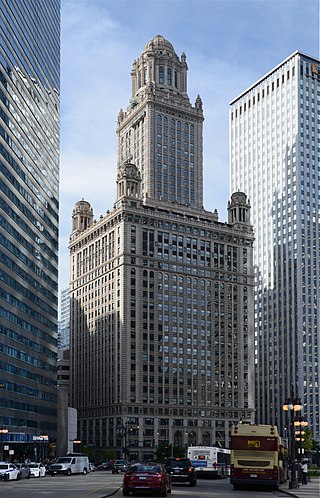
35 East Wacker, also known as the Jewelers' Building, is a 40-story 523 ft (159 m) historic building in the Loop community area of Chicago, Illinois, United States, located at the intersection of Wabash Avenue and East Wacker Drive, facing the Chicago River. It was built from 1925 to 1927, and was co-designed by Joachim Giæver and Frederick P. Dinkelberg. At the time of its completion in 1927, it was the tallest building in the world outside New York City. Formerly the Pure Oil Building and North American Life Insurance Building, 35 East Wacker was listed in 1978 as a contributing property to the Michigan–Wacker Historic District on the National Register of Historic Places, and was designated a Chicago Landmark on February 9, 1994.

The Oscar Stanton De Priest House is a historic apartment building at 4536-4538 South Dr. Martin Luther King Jr. Drive in Chicago, Illinois,. It was built in 1920, and one of its units was from 1929 to 1951 home to Oscar Stanton De Priest (1871–1951), the first African-American to be elected to the United States Congress from a northern state. The building was designated a National Historic Landmark on May 15, 1975. It is not open to the public.
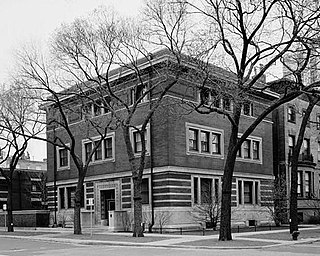
The Madlener House, also known as the Albert F. Madlener House, is a 20th-century mansion located in the Gold Coast neighborhood of Chicago, Illinois, USA. It is the work of architect Richard E. Schmidt (1865-1958) and designer Hugh M.G. Garden (1873-1961). Commissioned in 1901 and completed in 1902, the house was built as the residence for Albert Fridolin Madlener, a German-American brewery owner, and his wife, Elsa Seipp Madlener. Since 1963, it has been the headquarters of the Graham Foundation for Advanced Studies in the Fine Arts. In 1970, The Madlener House was placed on the National Register of Historic Places, and in 1973, it came under the protection of a Chicago ordinance protecting the city's historical and architectural landmarks. The house was fully remodeled and renovated by architect Daniel Brenner (1917-1977) in 1963–64.

The Eighth Regiment Armory, located in the Black Metropolis-Bronzeville District of Chicago, Illinois, was the first armory in the United States built for an African-American military regiment, known as the "Fighting 8th". The building later was used by a division of the Illinois National Guard, and during World War I was incorporated into the US Infantry. After closing the armory in the early 1960s, it became the South Central Gymnasium. In 1999, following an extensive renovation, it was reopened as a public high school military academy. The restoration and conversion into a school has been recognized by the National Trust for Historic Preservation.
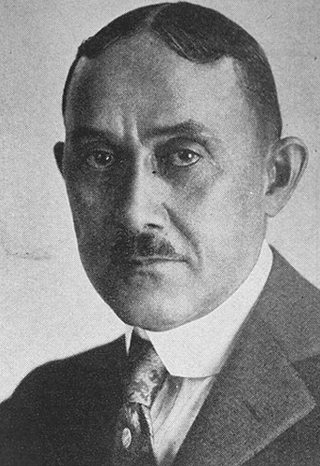
Anthony Overton Jr., was an American banker and manufacturer. He was the first African American to lead a major business conglomerate.

The Montgomery Ward Company Complex is the former national headquarters of Montgomery Ward, the United States' oldest mail order firm. The property is located along the North Branch of the Chicago River at 618 W. Chicago Avenue in Near North Side, Chicago, Illinois. It was listed on the National Register of Historic Places and as a National Historic Landmark on June 2, 1978.
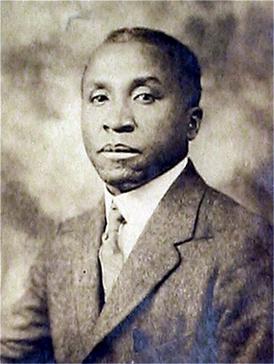
Walter Thomas Bailey was an American architect from Kewanee, Illinois. He was the first African American graduate with a bachelor of science degree in architectural engineering from the University of Illinois at Urbana-Champaign and the first licensed African-American architect in the state of Illinois. He worked at the Tuskegee Institute, and practiced in both Memphis and Chicago. Walter T. Bailey became the second African American that graduated from the University of Illinois.

Randolph Tower, formerly known as the Steuben Club Building, is a historic Gothic Revival skyscraper in Downtown Chicago. The building was constructed in 1929 and designed by architect Karl M. Vitzthum, who designed another Chicago landmark, the historic One North LaSalle Building.

Unity Hall is a historic building located at 3140 S. Indiana Ave. in the Douglas community area of Chicago, Illinois. Built in 1887, the building originally served as a Jewish social club called the Lakeside Club. The red brick building, designed by local architect L.B. Dixon, features terra cotta decorations and sheet metal edging. In 1917, Chicago alderman Oscar Stanton De Priest founded the Peoples Movement Club and made Unity Hall its headquarters. De Priest was the first African-American to serve on the Chicago City Council, and he established the Peoples Movement Club to organize the black community politically. The Peoples Movement Club became "one of the best organized political groups" in Chicago's Black Metropolis neighborhood, and De Priest became the first African-American U.S. Representative from the northern states in 1928.

The Chicago Bee or Chicago Sunday Bee was a Chicago-based weekly newspaper founded by Anthony Overton, an African American, in 1925. Its readership was primarily African American and the paper was committed to covering "wholesome and authentic news", and adopted a middle-class, conservative tone. Politically, it was aligned with the Republican Party. Overton established Half-Century Magazine in 1916 and it was published until 1925.
